Whether your windows need conservation, partial or complete re-leading, documentation is extremely important. The windows or individual panels, are photographed in transmitted and reflected light, before and after conservation or restoration. Rubbings are taken using archival vellum to ensure the longevity of the documentation. Important information is recorded on the rubbings such as dimensions, locations of damaged glass, lead sizes, support bar locations, tie-wire attachment points, and methods used to repair or replace the glass. These rubbings become the historical blueprint of the windows and preserve a record of their prior condition and the restoration work that has taken place, which can be invaluable in case of catastrophe. Also, future generations can approach further restoration with an informed knowledge of what has been done in the past.
Documentation
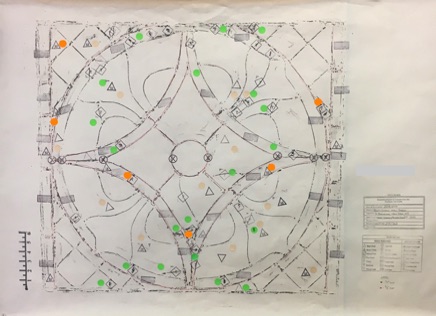
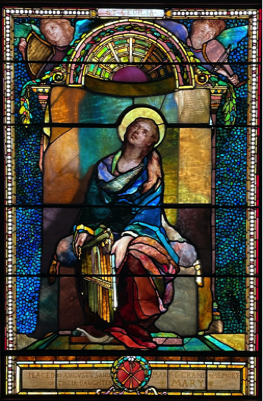
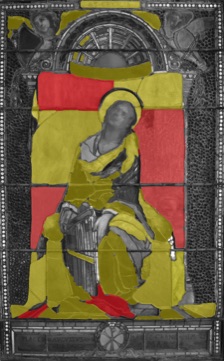
Location of interior plates.
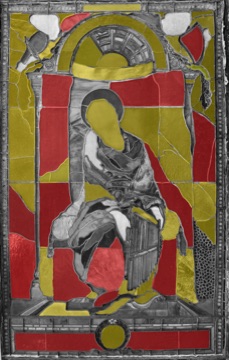
Location of exterior plates.
= Single layer
= Double layer
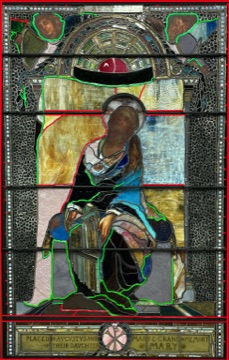
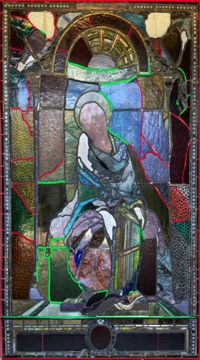
= New lead
= New flanges
Interior new lead and flanges location.
Exterior new lead and flanges location.
In today's world, we often need, and should take advantage of the digital equipment available to us to daocument our stained glass windows, when necessary. During a recent conservation project of a heavily plated window for the Morristown, NJ Historical Society, given the dimensions and fabrication method of the window, taking traditional rubbings to document the before and after conservation conditions was not feasable. Therefore, using an application on my ipad called "Pro-Create", I was able to document the plated sections of the window (interior and exterior), as well as where new lead was used and original lead retained. See series of images below.
